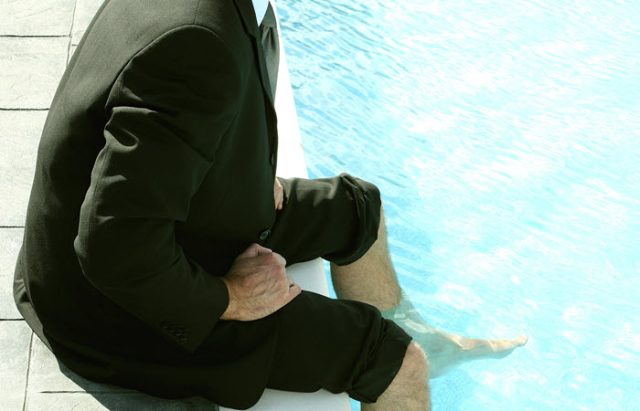How Our Most Celebrated Geniuses Defeated Creative Block
By Luke Doyle
August 8, 2018 • Fact checked by Dumb Little Man

Do you understand your own mind? Do you know how to spark creativity at will?
Probably not. Nobody does.
In the 21st century, we have maps of the brain. There are libraries of books on psychology, behavior, and self-improvement but the very wealth of literature demonstrates very little to no knowledge of what really goes on in that gray matter.
When you’re working towards a deadline and the ideas aren’t flowing or when you’re building a masterpiece and you’re facing a lot of problems, the idea of a hack or shortcut to the solutions can seem attractive.
Unfortunately, there is no switch you can flick to ignite that lightbulb moment in your brain. There are, however, plenty of things you can try. And we have centuries of geniuses to refer to when looking for such hacks.
Here’s a look at how some of our most inspired artists and inventors got their creative juices flowing.
Distract yourself
Many of these celebrated figures recognized that there was a part of the human mind that works on problems just below the surface of conscious thought. Of course, we know of this place as the subconscious. But waiting for ideas to reveal themselves in your dreams is unlikely to provide results before your deadline hits.
In fact, sometimes, it’s best to go in the opposite direction. If you quiet your mind and reduce the clutter, the voice from downstairs might become audible.
How you do this depends on your preferences and circumstances.
Igor Stravinsky, perhaps the most talented Russian composer of the 20th century, would stand on his head to shake the ideas out. Bizarrely, he believed that his action allowed his head to rest. In truth, it’s likely that concentrating on his balance took Stravinsky’s mind off of his work for a moment. That allowed new ideas to surface.
Steve Jobs notoriously used to bathe his feet in toilet water when he hit a wall. He said that he would do so to reduce stress. The cold water on his feet must have got him out of his head for a while. A regular footbath, or something more strenuous like a round of table tennis, are slightly more sanitary methods you might try.
Take a shortcut to your subconscious
The surrealists, an artist movement originating in the 1920s, believed the subconscious contained a wealth of ideas and solutions that modern man and woman were neglecting. They had many ways of trying to access these, including games such as ‘exquisite corpse’ and stream-of-conscious writing and drawing.
Salvador Dali, perhaps the most famous of the surrealists, had many such methods. One included trying to exploit the moments between waking and sleeping, in which strange images, thoughts, and solutions appear to us, only to evaporate. In order to capture that moment, he would retire with a key held above a plate. When he nodded off, the clatter of the falling key would wake him up immediately.
The Japanese inventor Nakamatsu Yoshirō tried the same, only with death rather than sleep!
In what sounds like a scene from Flatliners, he would hold his head under water until the brink of drowning. Remarkably, he has submitted over three thousand patents and somehow made it to the ripe age of 90. That said, this is not a technique to try at home.
And the greatest inventor of all time, Serbian-American Nikola Tesla, had the habit of curling his toes one hundred times before bed. He believed this was tuning his brain and it’s hard to argue with the man who harnessed electricity for us. But more likely the exercise got Tesla into a kind of meditative or trance-like state.
Create your ideal conditions
Torturing yourself to access those hidden fruits is not a wise idea. When you’re uncomfortable, your mind can be too busy dealing with the heat or the pain to actually get to work on the important stuff.
Truman Capote certainly believed this. He composed his novels and reports in recline and with a glass of sherry on hand. And the crime novelist Agatha Christie used to write in the bath. Of course, she wasn’t hindered (or electrocuted) by a laptop.
Try experimenting with your ideal work conditions. It can be tough to get the right balance of being comfortable without lulling yourself to sleep, but it just takes trying a few alternatives until you get it right.
Stimulate yourself
Christie had an odd habit in the bath: she used to eat apples while she worked and then line the cores up along the rim. Today, some people knowingly eat apples as a healthy alternative to drinking coffee. Containing 13 grams of natural sugar, an apple can give you that jolt that you normally get from caffeine.
Honoré de Balzac is another celebrated novelist with a tremendous output of inspired material. But he chose to stick with coffee, believing that under the caffeine influence “ideas quick-march into motion like battalions of a grand army to its legendary fighting ground and the battle rages.”
Unfortunately, it was the bad stomach resulting from this coffee addiction that finally killed him. Balance, people!
Change things up
Theodor Seuss Geisel, better known as Dr. Seuss, had an appropriately eccentric approach to writer’s block: he would enter his secret closet and pick one of his hundreds of weird and wonderful hats to wear while he worked.
This suggests a couple of ideas you can try without making a major investment in millinery. For one thing, you could take the actor’s ‘outside-in’ approach and try changing what you wear to alter your state of mind. That might be as simple as putting on shoes to work or a suit when normally you’d be casual.
Or you might try adopting another personality for an hour. Got an unsolvable problem? Imagine you’re Steve Jobs, Salvador Dali, or Agatha Christie, and try to work it out from their perspective.
One day you might even attain their level of income!
G. John Cole
John writes on behalf of The Business Backer. A digital nomad specializing in leadership, digital media, and personal growth topics, his passions include world cinema and biscuits. A native Englishman, he is always on the move, but can most commonly be spotted in the UK, Norway, and the Balkans.
LinkedIn: https://www.linkedin.com/in/gjohncole
Twitter: https://twitter.com/gjohncole
Gravatar: https://en.gravatar.com/gjohncole
Luke Doyle
Mancunian mammal.



